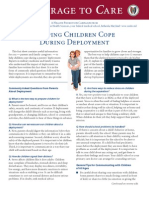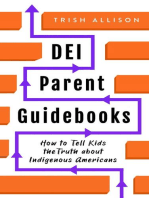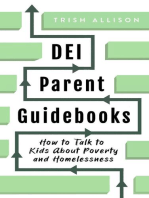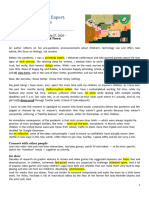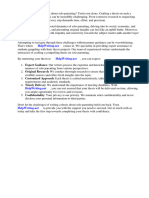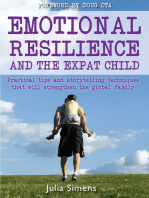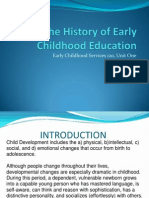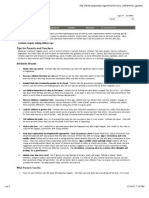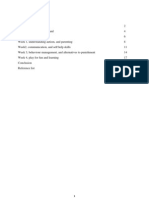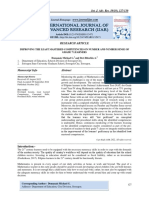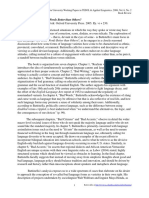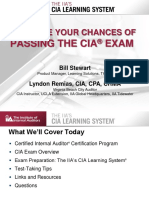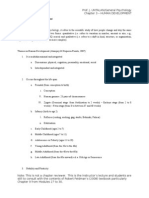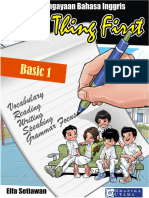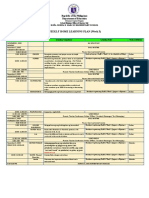0 ratings0% found this document useful (0 votes)
9 viewsScholasticnews Indepth War-Iraq Brodkin12
Scholasticnews Indepth War-Iraq Brodkin12
Uploaded by
Hirenkumar ShahThe document provides guidance for teachers on how to discuss tragic events like the Columbia disaster with students. It suggests listening to students' existing knowledge and concerns, addressing topics at an age-appropriate level, maintaining routines, and offering comforting activities to help students process their feelings.
Copyright:
© All Rights Reserved
Available Formats
Download as PDF, TXT or read online from Scribd
Scholasticnews Indepth War-Iraq Brodkin12
Scholasticnews Indepth War-Iraq Brodkin12
Uploaded by
Hirenkumar Shah0 ratings0% found this document useful (0 votes)
9 views1 pageThe document provides guidance for teachers on how to discuss tragic events like the Columbia disaster with students. It suggests listening to students' existing knowledge and concerns, addressing topics at an age-appropriate level, maintaining routines, and offering comforting activities to help students process their feelings.
Original Description:
scholasticnews
Original Title
Scholasticnews Indepth War-iraq Brodkin12
Copyright
© © All Rights Reserved
Available Formats
PDF, TXT or read online from Scribd
Share this document
Did you find this document useful?
Is this content inappropriate?
The document provides guidance for teachers on how to discuss tragic events like the Columbia disaster with students. It suggests listening to students' existing knowledge and concerns, addressing topics at an age-appropriate level, maintaining routines, and offering comforting activities to help students process their feelings.
Copyright:
© All Rights Reserved
Available Formats
Download as PDF, TXT or read online from Scribd
Download as pdf or txt
0 ratings0% found this document useful (0 votes)
9 views1 pageScholasticnews Indepth War-Iraq Brodkin12
Scholasticnews Indepth War-Iraq Brodkin12
Uploaded by
Hirenkumar ShahThe document provides guidance for teachers on how to discuss tragic events like the Columbia disaster with students. It suggests listening to students' existing knowledge and concerns, addressing topics at an age-appropriate level, maintaining routines, and offering comforting activities to help students process their feelings.
Copyright:
© All Rights Reserved
Available Formats
Download as PDF, TXT or read online from Scribd
Download as pdf or txt
You are on page 1of 1
Soon after the event, an ordinary citizen, when
given the tragic news by a roving reporter in
Times Square, cried out Oh, no! How much
more can this poor world stand! An imminent
war, smoldering conflict in various regions of the
world, the haunting memories of 9/11, and a
faltering economy have left many adult
Americans understandably edgy. And when
adults are edgy, children of all ages sense the
worry in the air.
Once more, teachers (and parents) face the
tough task of suspending their own disquietude
to consider how to reassure the very young. The
task is complicated by the fact that childrens
perception of the event may vary:
For some students, the tragedy will be
remote and they will have very little
knowledge.
Others may have been watching television on
Saturday morning and been introduced to
this event with little or no adult supervision.
As with any news event, the impact will be
greater in different parts of the country. In
this case, children in Texas and Florida may
be more deeply affected than children who
live farther away from the accident.
There are certain principles that do apply to
this or any other shocking eventnatural or
unnatural:
1.
Start by doing more listening than
talking. By doing so, teachers will know
how to handle the topic in their particular
classrooms. (The youngest children may say little
or nothing about the Columbias loss.) Somehow,
communicate the idea that while this is a
dangerous job, and the astronauts all knew that,
accidents like this are rare. Every once in a
while, something terrible happens; and the
scientists will learn from it, so they can better
protect future astronauts.
2.
Tailor discussions of bad news to
childrens ages and individual
sensitivities. By this point in the year, you
know the children in your classes well and you
know the developmental issues of your age
group. Broadly speaking, respond to their
questions honestly. But for the youngest and
most fragile of any age, offer minimal details to
avoid confusion and further worry.
When the subject arises, listen to their
impressions, thoughts, questions, and tailor your
responses to the needs you recognize. At times
like this, teaching moments should focus much
more on meeting emotional needs than on any
academic subject.
3.
Stick to familiar routines in your
classroom. Changes in routine are often
signals that something is wrong.
4.
Make time for comforting activities.
Games and activities that provide chances
for winning, for mastery as well as pure fun can
help dissipate feelings of powerlessness. Make
sure that the schedule is not unbalancedtilting
too much toward serious and worrisome topics.
You can suggest to parents that they make time
for comforting activities at home.
5.
Allow children to get involvedoffer
those who seek it an opportunity to do
something to help. The class may write a letter
to a class in Houston, for example; or send art
work to Mission Control.
6.
Make the school-to-home connection
either with a special parent-teacher
meeting, or with individual notes sent home.
Recommend to parents that they limit their
childrens exposure to all media reports. Ask
parents to share what they know about their
childrens concerns. How are they handling
things at home? Are there ways that teachers and
parents can collaborate? Learn whatever you can
from each other.
Following the COLUMBIA Tragedy
by Adele M. Brodkin, Ph.D.
A M E R I C A ' S C L A S S R O O M N E W S P A P E R
E D I T I O N 1/ 2
You might also like
- Kids These DaysDocument5 pagesKids These Daysapi-4659272210% (1)
- Glenn Wilson, Diana Grylls-Know Your Child's I. Q. (Pocket Guides) (1977)Document146 pagesGlenn Wilson, Diana Grylls-Know Your Child's I. Q. (Pocket Guides) (1977)JosephDarkieNo ratings yet
- The Art of Thinking Critically: Ask Great Questions, Spot Illogical Reasoning,From EverandThe Art of Thinking Critically: Ask Great Questions, Spot Illogical Reasoning,Rating: 4 out of 5 stars4/5 (1)
- Teenage RebellionDocument57 pagesTeenage RebellionChi Koy81% (16)
- Scholasticnews Indepth War-Iraq Expert AdviceDocument1 pageScholasticnews Indepth War-Iraq Expert AdviceHirenkumar ShahNo ratings yet
- CTChildren Cope During DeploymentDocument2 pagesCTChildren Cope During DeploymentEddie BlackNo ratings yet
- Water and FooterDocument11 pagesWater and FooterSen SokhaNo ratings yet
- National Association of School Psychologists Handout: Helping Children Cope With Grief and Loss.Document4 pagesNational Association of School Psychologists Handout: Helping Children Cope With Grief and Loss.Frank MaradiagaNo ratings yet
- How to Tell Kids the Truth About Indigenous Americans: DEI Parent GuidebooksFrom EverandHow to Tell Kids the Truth About Indigenous Americans: DEI Parent GuidebooksNo ratings yet
- How to Talk to Kids About Poverty and Homelessness: DEI Parent GuidebooksFrom EverandHow to Talk to Kids About Poverty and Homelessness: DEI Parent GuidebooksNo ratings yet
- Helping Children Cope With Disaster: A Child's Reaction To Disaster by AgeDocument4 pagesHelping Children Cope With Disaster: A Child's Reaction To Disaster by AgeIvan BodnaryukNo ratings yet
- I Was A Screen - Time ExpertDocument4 pagesI Was A Screen - Time ExpertpaulaNo ratings yet
- ChildrenDocument12 pagesChildrenapi-309082881No ratings yet
- Guidelines Talking To Kids About AttacksDocument2 pagesGuidelines Talking To Kids About AttacksNEWS CENTER MaineNo ratings yet
- Creative NonfictionDocument29 pagesCreative NonfictionChristine Joy VillasisNo ratings yet
- Lesson 13 - Building Caring Communities - Handling DissapointmentsDocument4 pagesLesson 13 - Building Caring Communities - Handling DissapointmentsRose Ann ProcesoNo ratings yet
- Talking To Children About WarDocument5 pagesTalking To Children About WarholaNo ratings yet
- Thesis About Solo ParentDocument4 pagesThesis About Solo ParentSomeoneToWriteMyPaperForMeEvansville100% (2)
- Tea y AdolescenciaDocument3 pagesTea y AdolescenciaCaro CaudilloNo ratings yet
- GriefDocument4 pagesGriefapi-83101465No ratings yet
- Module 22 Cognitive Developmeny of The Intermediate SchoolersDocument4 pagesModule 22 Cognitive Developmeny of The Intermediate Schoolersalmeanantone4No ratings yet
- Children's GriefDocument21 pagesChildren's GriefWinterSpringNo ratings yet
- Surviving The PrivilegeDocument5 pagesSurviving The PrivilegeRosheen Hassard SouthcombeNo ratings yet
- Emotional Resilience and the Expat Child: Practical Storytelling Techniques That Will Strengthen The Global FamilyFrom EverandEmotional Resilience and the Expat Child: Practical Storytelling Techniques That Will Strengthen The Global FamilyNo ratings yet
- Template For Field MethodsDocument29 pagesTemplate For Field MethodsJoemel EntritchoNo ratings yet
- The History of Early Childhood Education Unit One HandoutDocument38 pagesThe History of Early Childhood Education Unit One HandoutGie Apilado RanayNo ratings yet
- The History of Early Childhood Education Unit One HandoutDocument38 pagesThe History of Early Childhood Education Unit One HandoutUren Don Balami100% (1)
- Social IssuesDocument9 pagesSocial IssuesClaudia BoianNo ratings yet
- READ: Letter From MSAD #75 Superintendent Brad SmithDocument3 pagesREAD: Letter From MSAD #75 Superintendent Brad SmithNEWS CENTER MaineNo ratings yet
- Key Chuyên ĐềDocument166 pagesKey Chuyên Đềsbtctoan2000No ratings yet
- Writing For C1 and C2Document8 pagesWriting For C1 and C245.Võ Phương Vy100% (1)
- Reasons Behind TheDocument19 pagesReasons Behind Theanobanggustomo100% (1)
- Krister Ann Jimenez ACTIVITY 14 ParagraphDocument17 pagesKrister Ann Jimenez ACTIVITY 14 ParagraphJamie JimenezNo ratings yet
- Krister Ann Jimenez ACTIVITY 14 ParagraphDocument17 pagesKrister Ann Jimenez ACTIVITY 14 ParagraphKRISTER ANN JIMENEZNo ratings yet
- Helping Children CopeDocument3 pagesHelping Children Copeapi-126978716No ratings yet
- Supporting Children and Families - Elementary: MINT'S Idea BookDocument9 pagesSupporting Children and Families - Elementary: MINT'S Idea BookramyaNo ratings yet
- Childs PlayDocument11 pagesChilds Playapi-549592417No ratings yet
- Birth Order Essay ThesisDocument6 pagesBirth Order Essay ThesisKarla Long100% (2)
- Welcome To Holland A Guide To Parenting A Child With AutismDocument26 pagesWelcome To Holland A Guide To Parenting A Child With AutismNistor ElenaNo ratings yet
- The Family Firm: A Data-Driven Guide to Better Decision Making in the Early School YearsFrom EverandThe Family Firm: A Data-Driven Guide to Better Decision Making in the Early School YearsRating: 3.5 out of 5 stars3.5/5 (14)
- Noddings2001 - Article - CareAndCoercionInSchoolReformDocument10 pagesNoddings2001 - Article - CareAndCoercionInSchoolReformRogelio Carrera LópezNo ratings yet
- 2019 JC2 H1 GP Prelim Eunoia Junior CollegeDocument15 pages2019 JC2 H1 GP Prelim Eunoia Junior CollegeSamy RajooNo ratings yet
- Communicating With ChildrenDocument18 pagesCommunicating With ChildrenAlmira CayeNo ratings yet
- Sample Research PaperDocument10 pagesSample Research PaperRobert DavisNo ratings yet
- Academic Listening Encounters Life in Society TranscriptDocument5 pagesAcademic Listening Encounters Life in Society TranscriptHà Thu BùiNo ratings yet
- EJC JC2 2019 Prelim P2 InsertDocument5 pagesEJC JC2 2019 Prelim P2 InsertSumaiyaNo ratings yet
- France v. AmericaDocument11 pagesFrance v. AmericaRosa AmatoNo ratings yet
- Compassion Deficit DisorderDocument9 pagesCompassion Deficit Disorderjabolkrisann0No ratings yet
- 22 Skillsby 10Document2 pages22 Skillsby 10jknexus7No ratings yet
- Top 10 Solutions For Helping Returning High School StudentsDocument3 pagesTop 10 Solutions For Helping Returning High School StudentsPR.comNo ratings yet
- Paper 2 1-FinalDocument5 pagesPaper 2 1-Finalapi-277295404No ratings yet
- Cope With DisastersDocument2 pagesCope With Disastersapi-235065651No ratings yet
- How to Teach Kids to Connect with Older People: DEI Parent GuidebooksFrom EverandHow to Teach Kids to Connect with Older People: DEI Parent GuidebooksNo ratings yet
- Raising Children in A Democracy Rudolf Dreikurs, M.DDocument9 pagesRaising Children in A Democracy Rudolf Dreikurs, M.DcinderNo ratings yet
- Feathers For LunchDocument34 pagesFeathers For LunchHirenkumar ShahNo ratings yet
- Emergency Vehicles WheelDocument2 pagesEmergency Vehicles WheelHirenkumar ShahNo ratings yet
- Humpty Dumpty CompleteDocument25 pagesHumpty Dumpty CompleteSvetik RotaruNo ratings yet
- Jolly Good HockeyDocument20 pagesJolly Good HockeyHirenkumar Shah100% (2)
- Wheels BusDocument2 pagesWheels BusHirenkumar ShahNo ratings yet
- Animal SensesDocument14 pagesAnimal SensesHirenkumar ShahNo ratings yet
- Clever JohnDocument20 pagesClever JohnHirenkumar Shah100% (1)
- G1V1 U1 T1Document37 pagesG1V1 U1 T1Hirenkumar Shah100% (3)
- Activity Book KDocument325 pagesActivity Book KManuel Antonio Lazo Velasquez100% (1)
- English Language Arts Test: Book 1Document16 pagesEnglish Language Arts Test: Book 1Lena KovalenkoNo ratings yet
- Expert Answers: A Child Psychologist Helps You Field The Tough Questions Your Students May AskDocument1 pageExpert Answers: A Child Psychologist Helps You Field The Tough Questions Your Students May AskHirenkumar ShahNo ratings yet
- Scholasticnews Indepth War-Iraq Militaryquestions PDFDocument1 pageScholasticnews Indepth War-Iraq Militaryquestions PDFHirenkumar ShahNo ratings yet
- Scholasticnews Indepth Space Space3Document1 pageScholasticnews Indepth Space Space3Hirenkumar ShahNo ratings yet
- Scholasticnews Indepth Special Olympics SpecialolympicsDocument1 pageScholasticnews Indepth Special Olympics SpecialolympicsHirenkumar ShahNo ratings yet
- Scholasticnews Indepth Shuttle PiecesDocument1 pageScholasticnews Indepth Shuttle PiecesHirenkumar ShahNo ratings yet
- Scholasticnews Indepth Space Space2Document1 pageScholasticnews Indepth Space Space2Hirenkumar ShahNo ratings yet
- Self Assessment Proforma TeachersDocument5 pagesSelf Assessment Proforma TeachersAneeq BangashNo ratings yet
- House Hearing, 109TH Congress - Recovery and Preservation of Native American LanguagesDocument62 pagesHouse Hearing, 109TH Congress - Recovery and Preservation of Native American LanguagesScribd Government DocsNo ratings yet
- Improving The Least Mastered Competencies On Number and Number Sense of Grade 7 LearnersDocument13 pagesImproving The Least Mastered Competencies On Number and Number Sense of Grade 7 LearnersIJAR JOURNALNo ratings yet
- LP FNHS Soldered JointsDocument2 pagesLP FNHS Soldered JointsGlezelBayubayNo ratings yet
- Hope and Hurdles Women's Empowerment and Gender Equality in BangladeshDocument2 pagesHope and Hurdles Women's Empowerment and Gender Equality in Bangladeshasraralmamun45No ratings yet
- NT310DE01 Port Operation and Management 03: Course ID Course Title CreditsDocument4 pagesNT310DE01 Port Operation and Management 03: Course ID Course Title CreditsEr TyNo ratings yet
- English Listening Materials Audio ScriptDocument4 pagesEnglish Listening Materials Audio ScriptPrincy M Abraham0% (1)
- Simply Speaking - Facebook Com LinguaLIB PDFDocument37 pagesSimply Speaking - Facebook Com LinguaLIB PDFJhonatanAguilarNo ratings yet
- English Activity Sheet: Quarter 4 - Melc 3Document7 pagesEnglish Activity Sheet: Quarter 4 - Melc 3Trisha Dennielle AntinNo ratings yet
- Igcse DT Coursework ExamplesDocument5 pagesIgcse DT Coursework Examplesf5dthdcd100% (2)
- Local Culture Based Instructional Materials As An Effort To Develop Students' CharacterDocument6 pagesLocal Culture Based Instructional Materials As An Effort To Develop Students' CharacterRonnie DalgoNo ratings yet
- PH103 Commentary TemplateDocument4 pagesPH103 Commentary Template56thpw242wNo ratings yet
- April 2003Document30 pagesApril 2003pyoon1No ratings yet
- Intach Charter PDFDocument18 pagesIntach Charter PDFNagina Chawla100% (1)
- Project Rep Template For SMUDocument12 pagesProject Rep Template For SMUAvadesh KumarNo ratings yet
- Final Exam Q1 PDFDocument5 pagesFinal Exam Q1 PDFLEE ZIWEINo ratings yet
- (18420206 - Management & Marketing. Challenges For The Knowledge Society) Assessing Students' Entrepreneurial Skills Needed in The Knowledge EconomyDocument14 pages(18420206 - Management & Marketing. Challenges For The Knowledge Society) Assessing Students' Entrepreneurial Skills Needed in The Knowledge EconomyUmna liaquatNo ratings yet
- Bad Language: Are Some Words Better Than Others?Document2 pagesBad Language: Are Some Words Better Than Others?anon_821714091No ratings yet
- Bailey Lake's February Newsletter 2013Document4 pagesBailey Lake's February Newsletter 2013Bailey Lake PtaNo ratings yet
- Lesson Plan in Cookery 10 Cooking Methods of Vegetable DishesDocument2 pagesLesson Plan in Cookery 10 Cooking Methods of Vegetable DishesRechell Ellana Montierro100% (2)
- Republic of The Philippines 1Document12 pagesRepublic of The Philippines 1Geritt Edu ContilloNo ratings yet
- BA TamilDocument116 pagesBA TamilShakespeareNo ratings yet
- TLE - Grade 7&8 - LM. AFA-Aquaculture - Module 1Document20 pagesTLE - Grade 7&8 - LM. AFA-Aquaculture - Module 1mary kennie griarNo ratings yet
- CIA WebinarDocument43 pagesCIA WebinarManjula Nadeeth De SilvaNo ratings yet
- All About Nursing AbroadDocument7 pagesAll About Nursing AbroadChristian EstrellaNo ratings yet
- Chapter 3 Human DevelopmentDocument6 pagesChapter 3 Human Developmenthumanupgrade100% (2)
- Cooperc-Action EvalplanDocument5 pagesCooperc-Action Evalplanapi-404458146No ratings yet
- Basic 1 Revisi BagroundDocument139 pagesBasic 1 Revisi BagroundDibyo SetiawanNo ratings yet
- Individual Workweek PlanDocument11 pagesIndividual Workweek PlanCarl Laura ClimacoNo ratings yet
- Weekly Home Learning Plan (Week 3) : Republic of The Philippines Department of EducationDocument2 pagesWeekly Home Learning Plan (Week 3) : Republic of The Philippines Department of EducationJessa De Mesa DoloirasNo ratings yet






